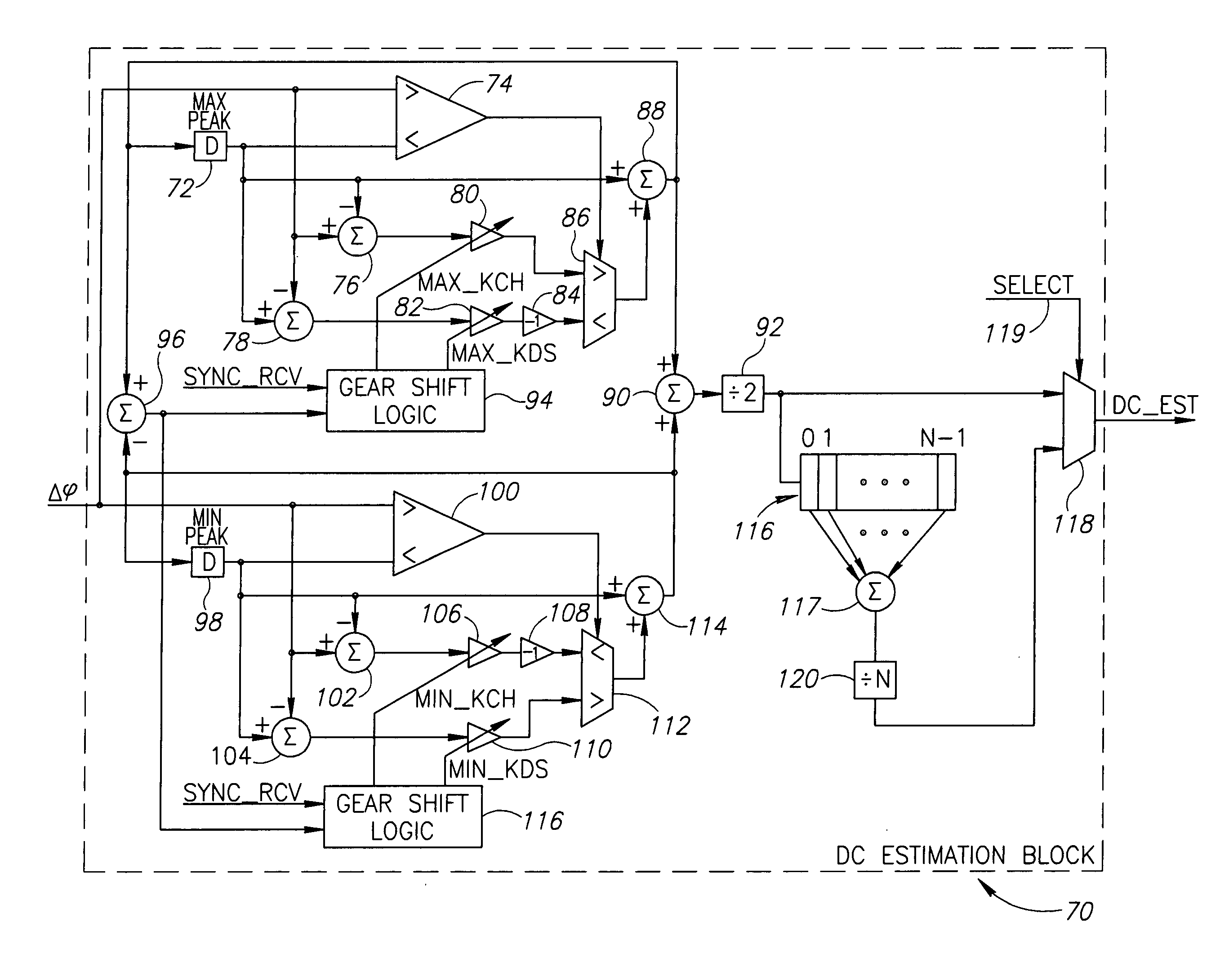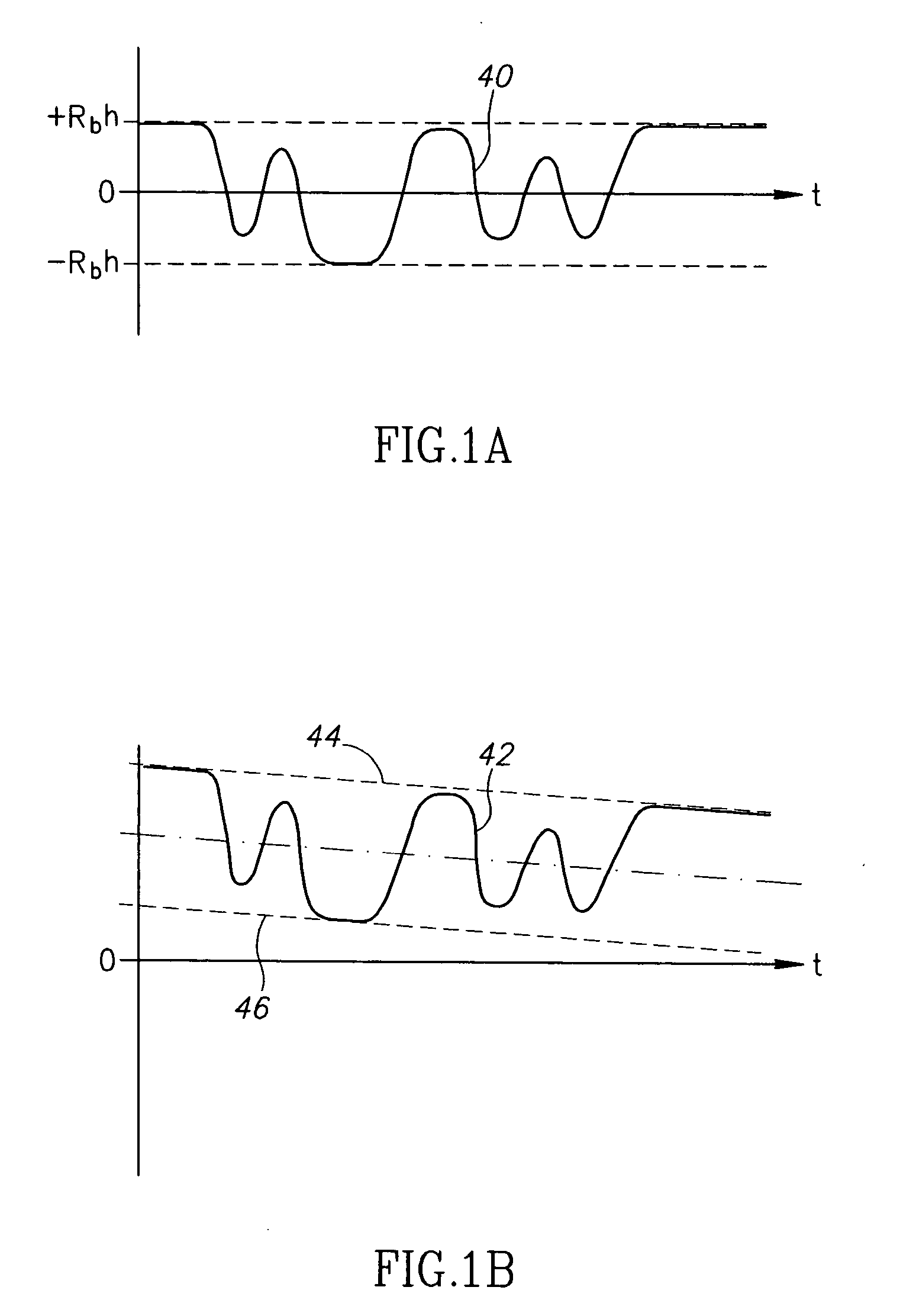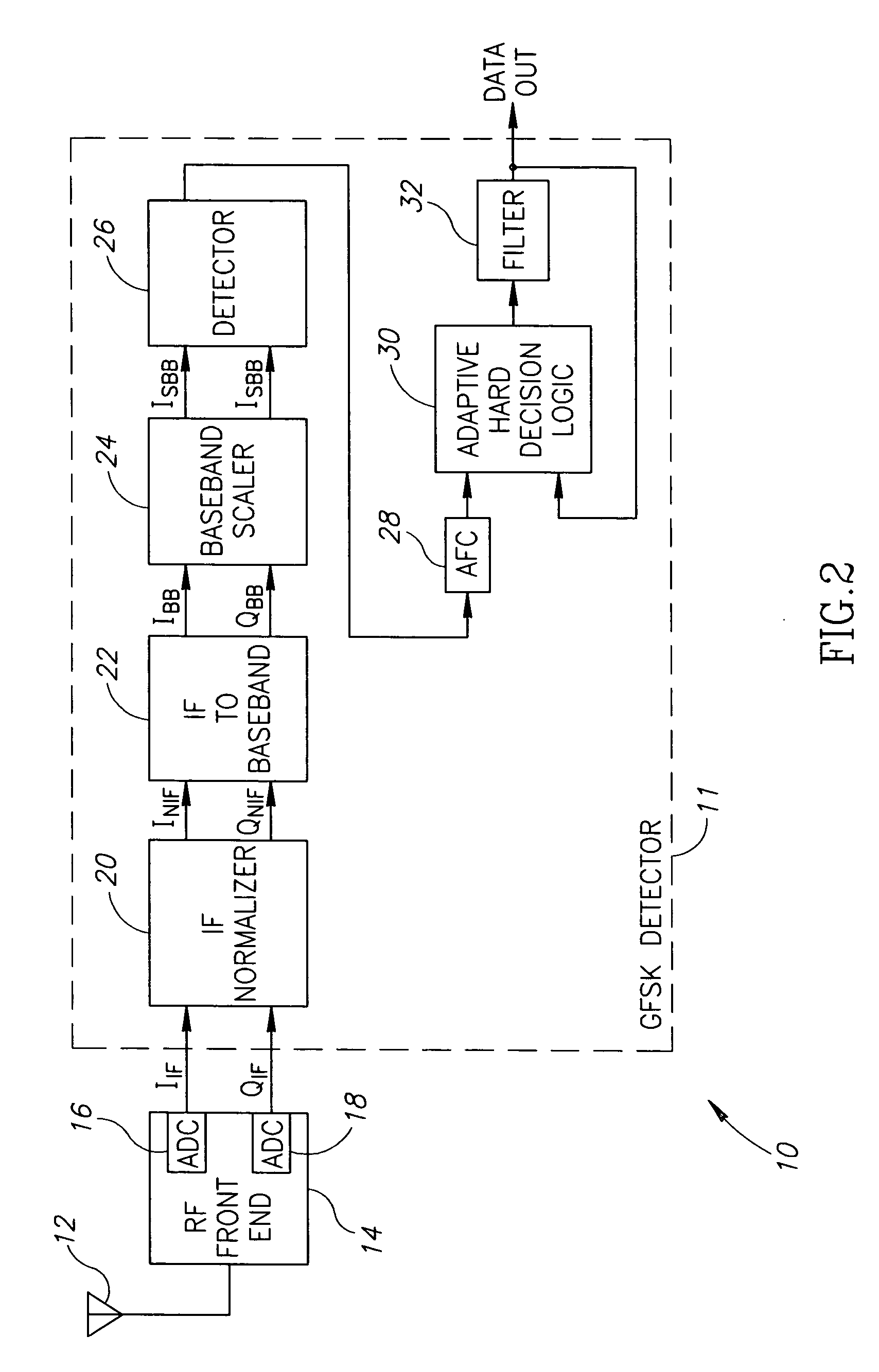Frequency offset compensation in a digital frequency shift keying receiver
a digital frequency shift and receiver technology, applied in the field of data communication, can solve the problems of frequency offset errors, frequency offset errors commonly introduced into the signal, and can be introduced at both the transmitter and the receiver, so as to simplify and accelerate the simulation based development and verification of the mechanism, and simplify the implementation of the mechanism. , the effect of facilitating compensation
- Summary
- Abstract
- Description
- Claims
- Application Information
AI Technical Summary
Benefits of technology
Problems solved by technology
Method used
Image
Examples
Embodiment Construction
Notation Used Throughout
[0033] The following notation is used throughout this document.
TermDefinitionAFCAutomatic Frequency ControlAHDLAdaptive Hard Decision LogicASICApplication Specific Integrated CircuitBERBit Error RateDCDirect CurrentFMFrequency ModulationFPGAField Programmable Gate ArrayFSKFrequency Shift KeyingGFSKGaussian Frequency Shift KeyingHDLHardware Description LanguageIFIntermediate FrequencyLOLocal OscillatorNCONumerically Controlled OscillatorRAMRandom Access MemoryRFRadio Frequency
DETAILED DESCRIPTION OF THE INVENTION
[0034] The present invention comprises an automatic frequency control (AFC) mechanism for frequency offset compensation in a digital receiver. The mechanism is a nonlinear adaptive mechanism that uses DC estimation and compensation in a feed-forward manner. The mechanism can be used, as shown in an example embodiment, in a multi-stage scheme to perform frequency offset compensation of an input signal for use by subsequent processing stages. The pre...
PUM
 Login to View More
Login to View More Abstract
Description
Claims
Application Information
 Login to View More
Login to View More - R&D
- Intellectual Property
- Life Sciences
- Materials
- Tech Scout
- Unparalleled Data Quality
- Higher Quality Content
- 60% Fewer Hallucinations
Browse by: Latest US Patents, China's latest patents, Technical Efficacy Thesaurus, Application Domain, Technology Topic, Popular Technical Reports.
© 2025 PatSnap. All rights reserved.Legal|Privacy policy|Modern Slavery Act Transparency Statement|Sitemap|About US| Contact US: help@patsnap.com



